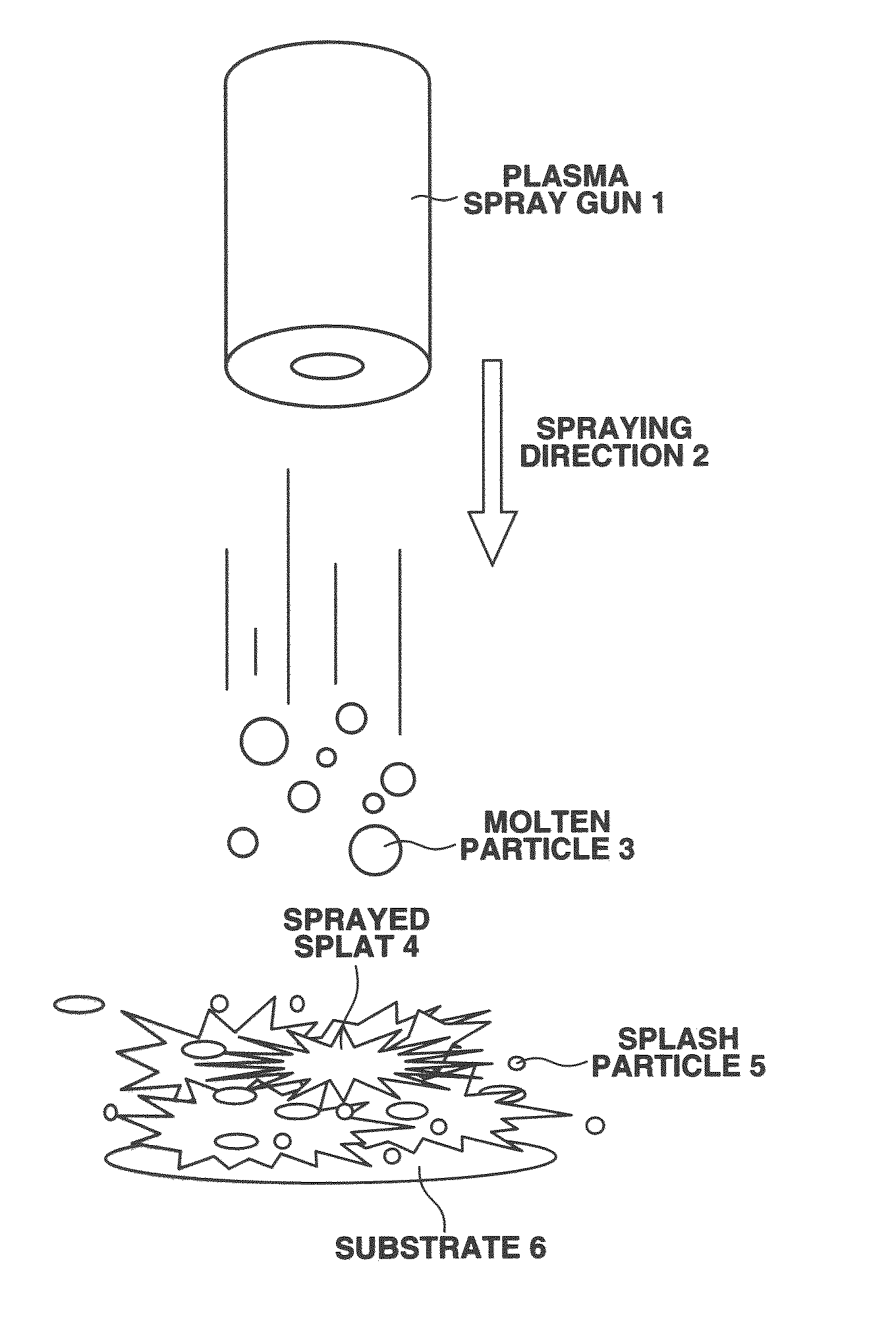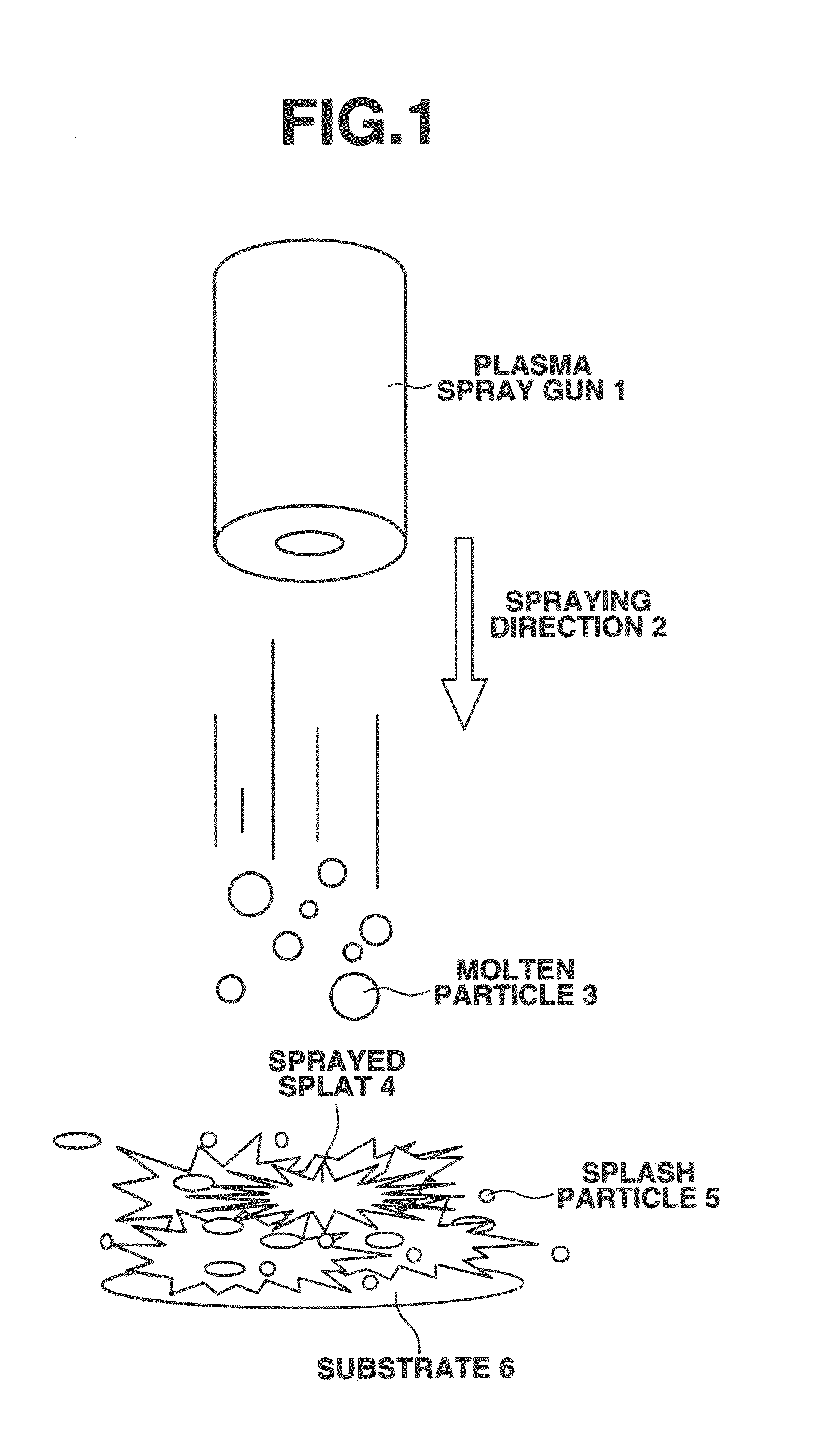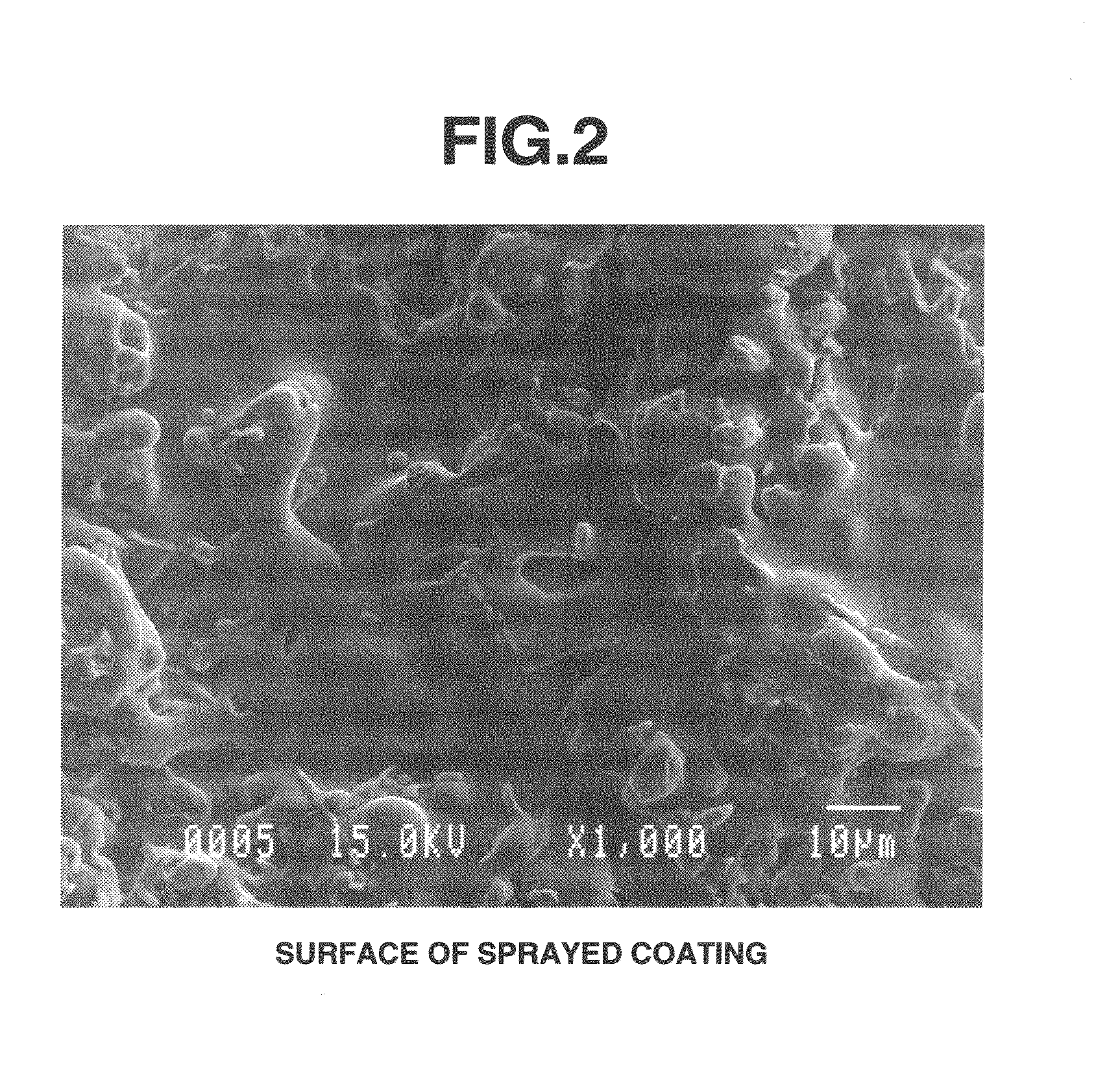Ceramic sprayed member, making method, abrasive medium for use therewith
a technology of ceramic sprayed coating and making method, which is applied in the direction of manufacturing tools, mechanical vibration separation, energy-based chemical/physical/physico-chemical processes, etc., can solve the problems of surface contamination and yttrium contamination of wafers, and achieve stable manufacture and improved plasma resistance. , the effect of reducing the contamination of the surfa
- Summary
- Abstract
- Description
- Claims
- Application Information
AI Technical Summary
Benefits of technology
Problems solved by technology
Method used
Image
Examples
example 1
[0042]A surface of an aluminum alloy substrate of 100 mm square was degreased with acetone and roughened with corundum abrasive. Yttrium oxide powder was sprayed onto the roughened surface by means of an atmospheric plasma spray apparatus, using argon gas as the plasma gas, a power of 40 kW, a spray distance of 100 mm, and a deposition rate of 30 μm / pass. A yttrium oxide coating of 250 μm thick was deposited.
[0043]The surface of the sprayed coating was then abraded by blasting an elastomeric medium containing 50% by volume of #1500 SiC (GC) abrasive grains in ethylene-propylene-diene rubber (EPDM) having an average particle size of about 500 μm for 10 minutes. A sample having a coating of 220 μm thick was obtained.
[0044]The sample was measured for surface roughness by an instrument Handysurf E-35A (Tokyo Seimitsu Co., Ltd.), with the data plotted as a surface roughness curve in FIG. 7.
example 2
[0045]A surface of an aluminum alloy substrate of 100 mm square was degreased with acetone and roughened with corundum abrasive. Yttrium fluoride powder was sprayed onto the roughened surface by means of an atmospheric plasma spray apparatus, using argon gas as the plasma gas, a power of 40 kW, a spray distance of 100 mm, and a deposition rate of 30 μm / pass. A yttrium fluoride coating of 250 μm thick was deposited.
[0046]The surface of the sprayed coating was blasted with the same elastomeric medium as in Example 1 for 10 minutes. A sample having a coating of 220 gm thick was obtained.
example 3
[0047]A surface of an aluminum alloy disc having a diameter of 400 mm (serving as a ring-shaped semiconductor etcher member) was degreased with acetone and roughened with corundum abrasive. Yttrium oxide powder was sprayed onto the roughened surface by means of an atmospheric plasma spray apparatus, using argon gas as the plasma gas, a power of 40 kW, a spray distance of 100 mm, and a deposition rate of 30 μm / pass. A yttrium oxide coating of 250 μm thick was deposited.
[0048]The surface of the sprayed coating was blasted with the same elastomeric medium as in Example 1 for 30 minutes.
[0049]A member having a coating of 220 μm thick was obtained.
PUM
| Property | Measurement | Unit |
|---|---|---|
| particle size | aaaaa | aaaaa |
| thickness | aaaaa | aaaaa |
| thickness | aaaaa | aaaaa |
Abstract
Description
Claims
Application Information
 Login to View More
Login to View More - R&D
- Intellectual Property
- Life Sciences
- Materials
- Tech Scout
- Unparalleled Data Quality
- Higher Quality Content
- 60% Fewer Hallucinations
Browse by: Latest US Patents, China's latest patents, Technical Efficacy Thesaurus, Application Domain, Technology Topic, Popular Technical Reports.
© 2025 PatSnap. All rights reserved.Legal|Privacy policy|Modern Slavery Act Transparency Statement|Sitemap|About US| Contact US: help@patsnap.com



